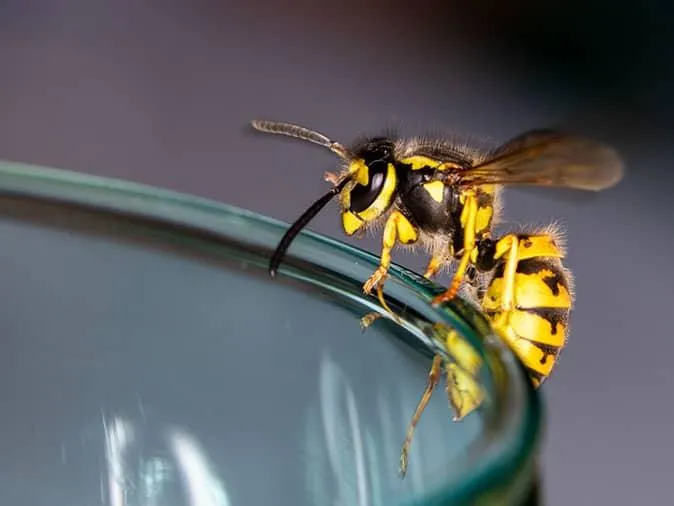Discovering wasps around your home can be alarming, especially when their numbers increase. These insects are not only a nuisance but also a potential safety hazard due to their painful stings. While DIY measures might seem tempting, professional pest control services are often essential for safely and effectively managing wasp infestations.
Professionals from saelapest.com can tackle the problem thoroughly, minimizing the risks and ensuring your property remains secure. But what might be attracting these unwelcome guests to your home in the first place?
Here are the top five reasons for wasp infestations.
1. Availability of Food Sources
Wasps are always on the lookout for food, and your home may unknowingly offer them a buffet. Sweet and sugary substances, such as soda spills, ripe fruits, and discarded food scraps, are particularly enticing to them. In addition, wasps target protein-rich foods like meat and pet food.
If your outdoor trash bins are not properly sealed or if food is left unattended during barbecues, wasps can quickly zero in on these sources. To mitigate the attraction, ensure your trash is covered, clean up food spills promptly, and avoid leaving food items out in the open for extended periods.
2. Sheltered Nesting Spots
Sheltered areas around your home provide the perfect environment for wasps to build their nests. They prefer locations that are protected from harsh weather and predators, such as under eaves, in attics, behind siding, or in garden sheds.
Even small, overlooked spaces like gaps in walls or cracks in wood can serve as entry points for establishing nests. Regularly inspect your property for potential nesting spots and seal off crevices to prevent wasps from settling in.
3. Access to Water
Like most living things, wasps need water to survive. They’re often drawn to homes that have convenient water sources like birdbaths, leaky faucets, pet bowls, or even damp soil. Water is not only essential for drinking, but also used by wasps to help cool down their nests during hot weather.
To reduce wasp activity, eliminate stagnant water and fix any leaks around your property. Make sure outdoor water containers are emptied or cleaned frequently, especially during the warmer months when wasps are most active.
4. Favorable Weather Conditions
Wasps are much more active during warm weather. Summer and early fall provide ideal conditions for wasp activity, as higher temperatures encourage their reproduction and nesting behaviors. If your region experiences particularly warm and dry weather, it may lead to an uptick in the wasp population around your home.
While you cannot control the weather, being proactive during peak seasons can help minimize infestations. Regularly monitor your property during late spring and summer when wasps are most likely to establish nests.
5. Proximity to Gardens and Flowering Plants
If your home is surrounded by lush gardens or flowering plants, it might be a magnet for wasps. These insects are naturally attracted to the nectar found in flowers, as it provides them with nourishment. Certain plants, like fruit trees or flowering bushes, can draw wasps closer to your living spaces.
To manage this, consider planting flowers and shrubs that are less appealing to wasps or keeping your garden a safe distance from key areas like patios or windows.
Conclusion
Understanding the reasons behind wasp infestations can help you take the necessary steps to prevent them. From securing food and water sources to addressing nesting spots, small proactive measures can make your property less attractive to wasps. However, if you notice signs of wasp nests or an increased presence of these insects around your home, it’s best to seek professional pest control services.
